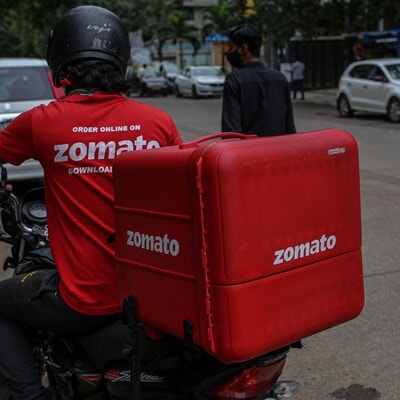Ola, Uber among 21 cos registered under Delhi’s vehicle aggregator scheme
“The response to the scheme is a testament to the confidence that businesses have in our vision for sustainable and efficient urban mobility,” Delhi’s Transport Minister Kailash Gahlot said.. Photographer: Dhiraj Singh/Bloomberg
Over one lakh vehicles of 21 different cab aggregators, delivery service providers and e-commerce companies are now onboard the Delhi government’s ‘Motor Vehicle Aggregator and Delivery Service Provider Scheme’, the city’s transport department said on Saturday.
Under the scheme, cab aggregators, delivery service providers and e-commerce entities with more than 25 vehicles in their fleet have to register to obtain a licence and it also sets a timeline for the electrification of their fleets.
The non-compliant cab aggregators will face action as per the provisions of the scheme, it said.
The scheme stipulates penalties ranging from Rs 5,000 up to Rs 100,000 per instance.
The onboarded entities include Smartshift Logistics, ANI Technologies, the parent company of Ola, Uber India, Zomato Ltd., Blink Commerce, Swigfy Ltd, MoEVing Urban Technologies., and Roppen Transportation Services among others, it said.
The fleet of vehicles of these companies includes electric, petrol and CNG driven two, three and four wheelers. The biggest fleets belong to over 50,000 vehicles of Smartshift Logistics, followed by ANI Technologies with more than 36000, Zomato with over 22,000 and Blink Commerce with over 10000, data showed.
“The response to the scheme is a testament to the confidence that businesses have in our vision for sustainable and efficient urban mobility,” Delhi’s Transport Minister Kailash Gahlot said.
This initiative will not only promote green mobility but also set high standards for service quality and public safety in the transport sector, he said.
The Kejriwal government had notified the ‘Delhi Motor Vehicle Aggregator and Delivery Service Provider Scheme 2023’ in November 2023.
The scheme has set the stage for comprehensive regulation and licensing of can aggregators, e-commerce and delivery service providers in the city.
It covers those with 25 or more motor vehicles (2W, 3W, and 4W, excluding buses) in their fleet, who use a digital intermediary such as an app or web portal to connect with consumers for their services.
Under the scheme, all existing or new operators were required to obtain a license within 90 days of the scheme’s notification or before commencing operations.
Once obtained, the licenses will be valid for five years, with annual fees applicable, and zero fees in the case of electric vehicles. Additionally, a 50 per cent rebate will be provided for vehicles that are less than two years old.
The scheme also sets goals for the electrification of the transport fleet of the licensed operators. For two-wheeler (2W) passenger vehicles, the timeline for electrification target is 6 months.
For 3W passenger vehicles, the timeline for electrification is 10 per cent in six months, 25 per cent in one year, 50 per cent in 2 years, 75 per cent in 3 years and 100 per cent in 4 years. For 4W passenger vehicles, the timeline for electrification is 5 per cent in 6 months, 15 per cent in one year, 25 per cent in 2 years, 50 per cent in 3 years, 75 per cent in 4 years and 100 per cent in 5 years.
The electrification target for the 2W and 3W goods vehicles is 10 per cent in six months, 25 per cent in one year, 50 per cent in 2 years, 75 per cent in 3 years and 100 per cent in 4 years.
For the 4W vehicles, the electrification target is 5 per cent in 6 months, 15 per cent in one year, 25 per cent in 2 years, 50 per cent in 3 years, 75 per cent in 4 years, and 100 per cent in 5 years.
(Only the headline and picture of this report may have been reworked by the Business Standard staff; the rest of the content is auto-generated from a syndicated feed.)
First Published: Jul 13 2024 | 11:17 PM IST
